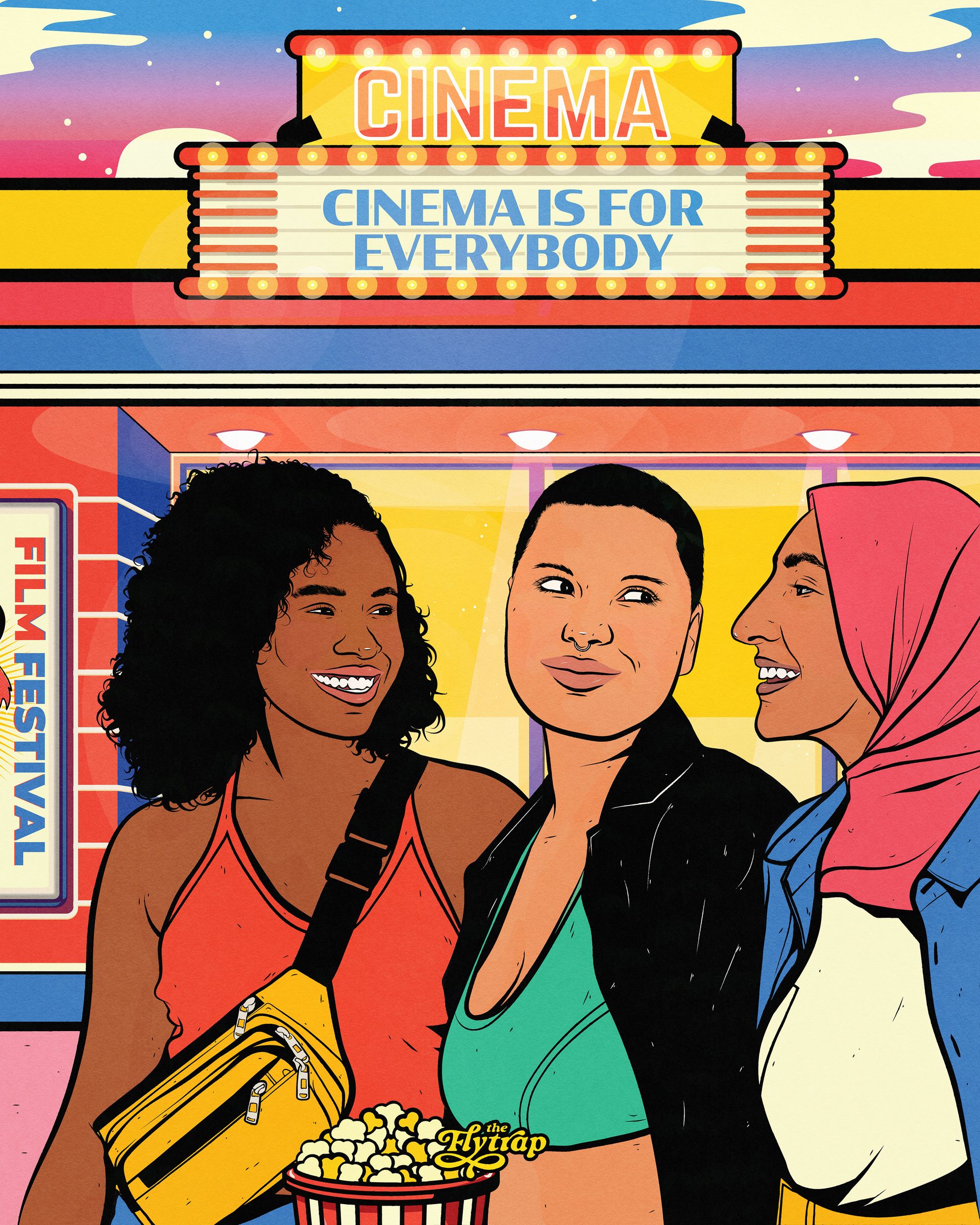- The Flytrap
- Posts
- Upending the Male (Film) Gaze
Upending the Male (Film) Gaze
The Flytrap spoke to the community organizers diversifying film culture away from the whims of film bros.
🛑 HOLD UP THERE, FRIEND! READ THIS FIRST! 🛑
WE’VE MOVED! You’re reading this on an archived version of The Flytrap that exists only to preserve links to content we published before August 27, 2025.
To read this post and get new editions in your inbox every week, subscribe over at our new home on Ghost. (And if you’re already a paid Flytrap subscriber, you should have experienced an almost seamless transition to be able to read our content on Ghost, but if you aren’t able to do so, please reach out to the Flyteam at [email protected].)
While we have you: The Flytrap merch store is now open! Get dripped out in the latest Flytrap merch or buy a poster from our collection.

Credit: rommy torrico.
The film bro, a figure that haunts cinephile spaces both online and in real life, is a self-described movie nerd with limited, male-centered film taste. Film bros, who can be professional critics or simply amateur cinephiles, analyze films through an insufferable misogynistic lens, consistently looking down on and over-criticizing anything that doesn’t follow a traditionally male storytelling format (think Barbie versus Oppenheimer). Since Hollywood studios continue to cater primarily to white male audiences, film bros internalize the sense that their opinions are law in cinephile communities, leaving little space for marginalized voices to cut through to mainstream audiences.
Despite growing concerns about the lack of representation of women and people of color in the entertainment industry in the wake of the #MeToo movement, film criticism remains an overwhelmingly male-dominated field. According to a 2022 study, men account for 69% of critics across print, radio, television and online outlets, while women critics account for 31% and nonbinary people account for 0.3%. Although the number of films with female protagonists increased in 2024, the number of women behind the scenes is still low, with women comprising just 23% of directors, writers, producers, executive producers, editors, and cinematographers working on the 250 top films of 2024. Given these facts, it’s unsurprising that film bros tend to make cinephile communities hostile to anybody who isn’t a cishet white man.
But it doesn’t have to be this way. New, intentionally inclusive grassroots cinephile communities have begun to model alternatives that could help pave the way for a future with better representation for the marginalized both on screen and off. Over the past few months, I spoke to cinephile community managers and founders attempting to build a more inclusive film culture. Their insights helped me understand more about how film bros exclude diverse audiences from conversations about film as well as what it would take to effect positive change in our male-centered movie culture.

Become a Member to Keep Reading
Join fellow fans of independent, worker-owed feminist criticism against the algorithm.
Already a paying subscriber? Sign In.
Members receive:
- • 🌱 Fresh Flytrap posts every Tuesday
- • 📰 Full access to our entire back catalog
- • 💫 Discounted admission to Flytrap classes and events
- • 🌈 The satisfaction of supporting independent feminist media